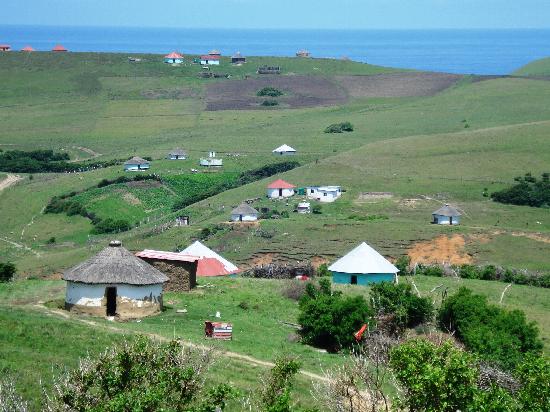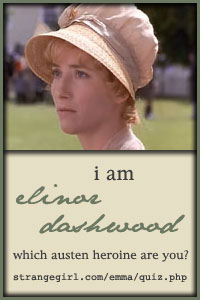 Yes, God save Africa, the beloved country. God save us from the depths of our sins. God save us from the fear that is afraid of justice. God save us from the fear that is afraid of men. God save us all.
Yes, God save Africa, the beloved country. God save us from the depths of our sins. God save us from the fear that is afraid of justice. God save us from the fear that is afraid of men. God save us all.In 1948, a novel was published that told the world of the struggles, heartaches, and injustices of the people of South Africa. It called upon those in power to face the problems that they had created, and to strive to bring hope and healing back to the land. That same year, the horrible political system of apartheid became the way of life in South Africa, a way of life that would not be destroyed until almost 50 years later. Alan Paton's novel Cry, the Beloved Country is a call for truth, justice, freedom, and human dignity.
The Plot:
Stephen Kumalo is an Anglican priest living in a small village in South Africa. When news comes regarding his sister, who left for Johannesburg years previous and did not write, he makes his first journey to the big city. He is immediately overwhelmed by the size and pace of city life. He is also shocked and saddened by the poverty and degeneration of the local native population. It is not long before Rev. Kumalo learns that his son, Absalom, who has also been gone for awhile, may have fallen into a life of petty crime.
Tragedy strikes when Absalom is accused of the murder of a local engineer who was heavily involved in seeking justice for the native tribes. Rev. Kumalo realizes that the engineer was also the son of a white farmer who lived near Kumalo's village. Shame, regret, doubt, anger, and grief envelope Rev. Kumalo as he struggles to keep his faith in God, in people, and in the country he loves. He can only wonder if the broken tribes of his people will ever be made whole again.
My Review (Caution-Spoilers):
In his introduction to the novel, Lewis Gannett writes, "We have had many novels from statesmen and reformers, almost all bad; many novels from poets, almost all thin. In Alan Paton's Cry, the Beloved Country the statesman, the poet, and the novelist meet in an unique harmony." That is the perfect description of what this novel is.
First (and in my mind, foremost) this is a beautiful novel. It is lyrical in it's style and from the first line to the last, you will be swept away by the rhythmic, powerful tone that Paton uses. In fact, there are many places where the book reads almost like one long poem. It isn't often that a novel can be enjoyed simply for it's words, regardless of the story.
But, of course, the story itself is powerful too. So powerful, in fact, that it was one of the banned books during South Africa's apartheid. Like Rev. Kumalo, Paton is not blind to the degeneration of the native population like crime, alcohol abuse, and prostitution. But rather than simply view it as an internal problem, Paton lays the blame squarely at the European's door. The breaking up of the tribes, the forced labor in the mines, the ruining of tribal lands, the poverty, the lack of useful education...all of these have contributed to the problems that plague South Africa. The other part of the problem is that South Africa is not a unified country. Rather, it is three separate worlds (English, Afrikaans, and native) fighting for space and power. Paton attacks this also, urging us to not seek power over another, but to realize that true power is found only in love.
With such a heavy message as this, one has to wonder if this book can be at all uplifting. The answer is a resounding "yes". Though Paton deals with many difficult issues, he ends the novel with a glimmer of hope. Rain falls once again on the sunburned valley, local native farmers are given instruction on better methods, and a local white farmer uses his position to better the whole valley. Hope has come to the valley, but only because grief, anger, and prejudice have been laid aside in favor of a country built by and for the English, the Afrikaans, and the natives. I also enjoyed the strong faith portrayed in the novel. It is more than obvious that Paton's own faith had a great role in shaping him and his writing.
This is by far the best book that I have read this year. I can't begin to describe how enthralling, gorgeous, and uplifting I found it. If you have not yet read this gem, I suggest you do so immediately. It is a story that the world must continue to hear.
The Movie:
There are currently two version of this story on film. The first is the 1952 version starring Canada Lee, Charles Carson, and Sidney Poitier. I have not seen this one.
The other is the 1995 version starring James Earl Jones and Richard Harris. This was a very good version. Of course, some of the beauty and scope of the novel did not translate to the film, but overall it was a very good adaptation. I recommend it.
















2 comments:
This is one of the most powerful books I've ever read. Can't believe it didn't come across my path until I was in my forties, but I'm glad I finally discovered it.
I can't quite believe that it took me this long to get around to it. I'm surprised no one ever recommended it to me. Thank you for all of your sweet comments on my recent posts! I really appreciate it!
Post a Comment